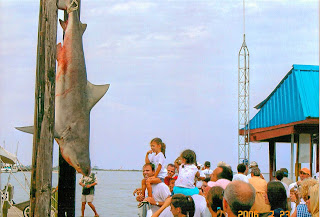Saturday, August 27, 2011
Visitation Monastery
The Convent of the Visitation on Spring Hill Avenue was first established in 1833 by Bishop Portier and constructed with the help of his Master Builder Claude Beroujon. It provides one of the most beautiful settings in Mobile. It served as a school from its beginnings until 1953 when it was converted to a retreat house. Students came not just from Mobile but throughout the area and even Latin America. The surviving buildings were constructed between 1854 and 1895. The chapel dedicated to the Sacred Heart was realized through the financial assistance of Madame Camille Marguerite De Poorter and the McGill brothers, Felix and Arthur in 1895. Harrod and Andry of New Orleans served as architects. In 1953 a Candy Shop was established and the Nuns continue to make and sell their delicious "Heavenly Hash" along with linens and other souvenirs at the gift shop.
Friday, August 19, 2011
Washington Square, Oakleigh Garden District
I recommend to anyone visiting Mobile that they take a tour of the Oakleigh Garden District. In the heart of the district is Washington Square which was deeded to the city as a public promenade in 1850. The homes facing the square were built just after the Civil War and represent some of the best examples of italianate and victorian architecture in the city.
Thursday, August 11, 2011
Early Furnishings of Mobile
I have often wondered what happened to the early furnishings of Mobile. I'm not talking about the large plantation style furnishings of the antebellum era but the stuff before that. I am talking about the furnishings of the colonial period and territorial years. Sure, there were large fires in 1827 and 1839 that destroyed much of what was then Mobile but I'm sure that plenty of people had the opportunity to save their belongings before losing their homes. Not to mention the many plantation homes all around the bay and congregated along the rivers just north of Mobile, some of which survived into the 20th century. What is certain is that they are exceedingly rare and one of my favorite hobbies is searching the many antique stores around town for them and any other local items that may pre-date statehood. I have added photos of a few of the early items from my collection that I believe to have a local provenance and are, at least, regional pieces.
| 18th to early 19th century Creole Style chair (found in Mobile) |
| primitive ladder back chair (found in South Mobile County) |
| Croom (Gaillard) Armoire, c. 1835, with center belt drawer |
 |
| Gaillard House, 1836 (HABS Photo) Zeno Chastang House, representative of early plantation house on Mobile River (HABS Photo) |
Friday, August 5, 2011
Dauphin Island
Dauphin Island is a barrier Island south of Mobile that is rich in history and natural beauty. It was named Isle Dauphine in 1707 in honor of the wife of the heir apparent to the throne of France. It has beautiful white sand beaches and, at times, the waters around the island can be the same brilliant emerald colors that have made other parts of the gulf coast famous.
 |
| Detail from "Vue de l'Isle Dauphine dans la province de La Louisiane", ca. 1718 |
| West End, Dauphin Island, Alabama |
| Bayou Heron, Dauphin Island, Alabama |
| Enjoying the Island |
 |
| Dauphin Island Deep Sea Fishing Rodeo, 2006 |
 |
| Dauphin Island Dunes, George Bryant, 1956 |
Tuesday, August 2, 2011
Honeymoon, 1967
I couldn't resist uploading a few of the photos that I ran across recently from my parent's honeymoon in Mobile.
Subscribe to:
Posts (Atom)







